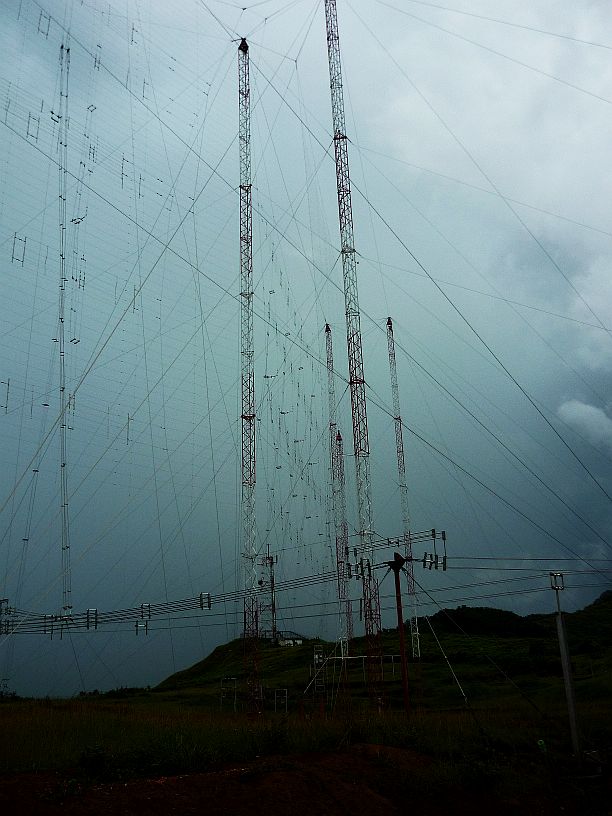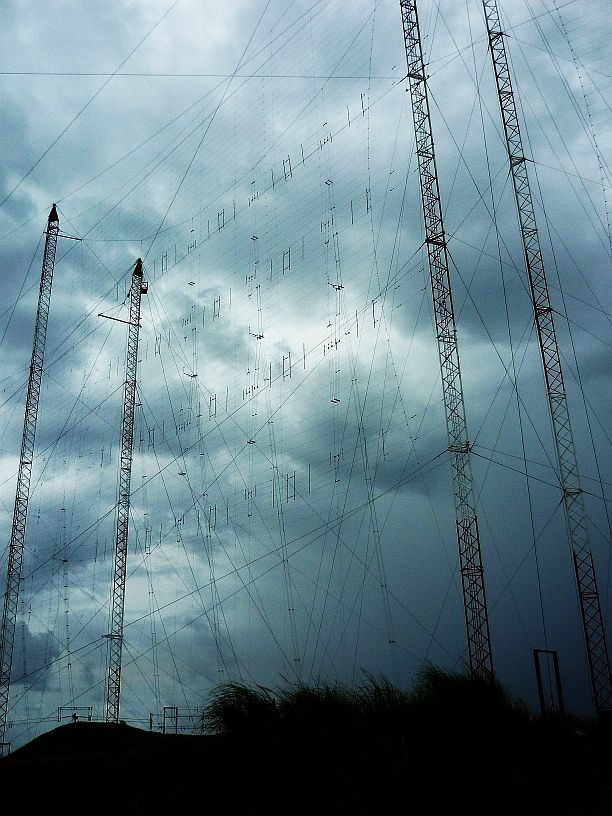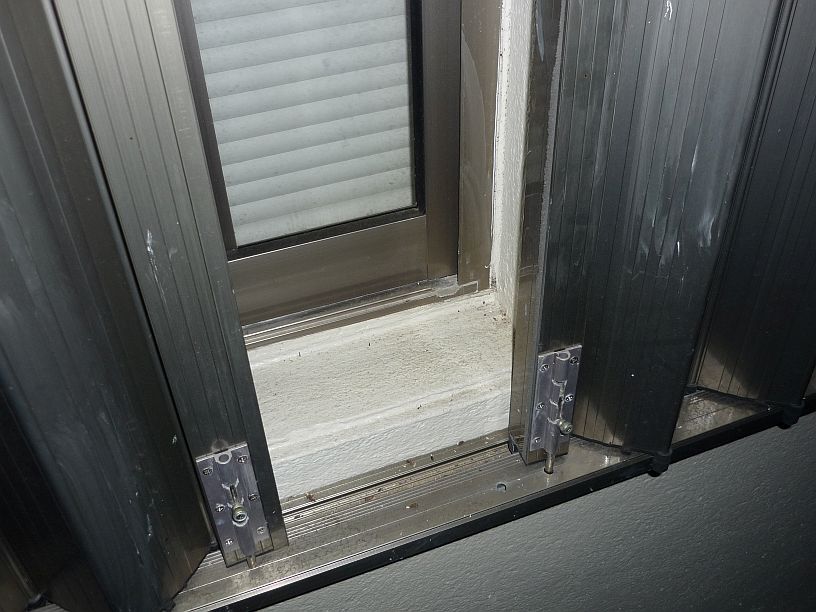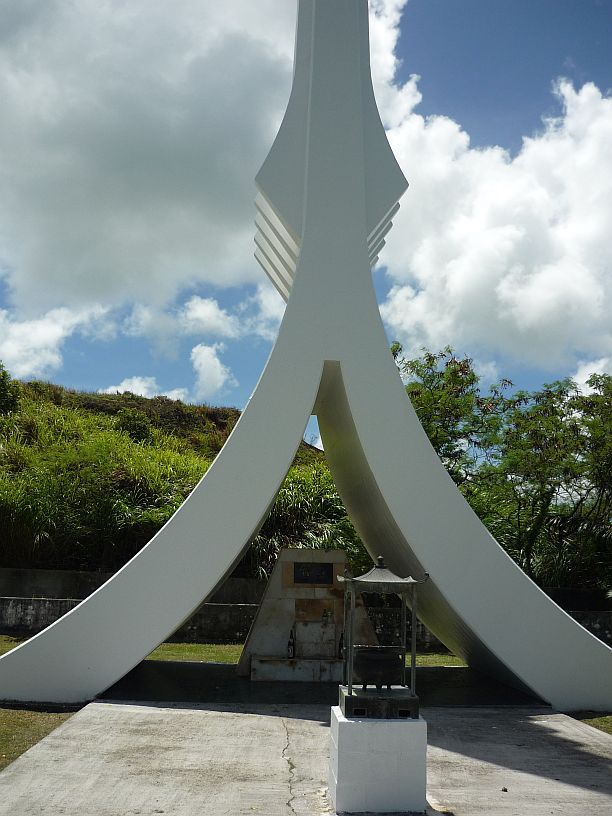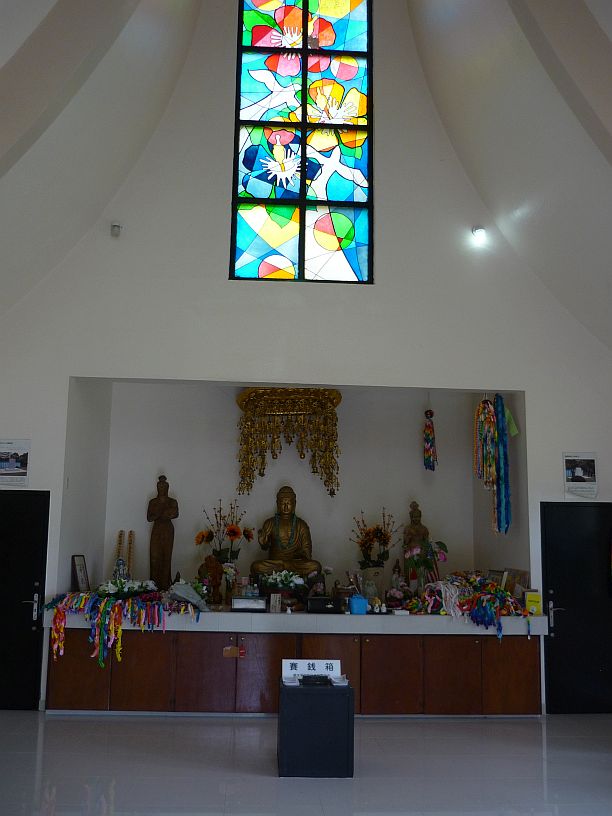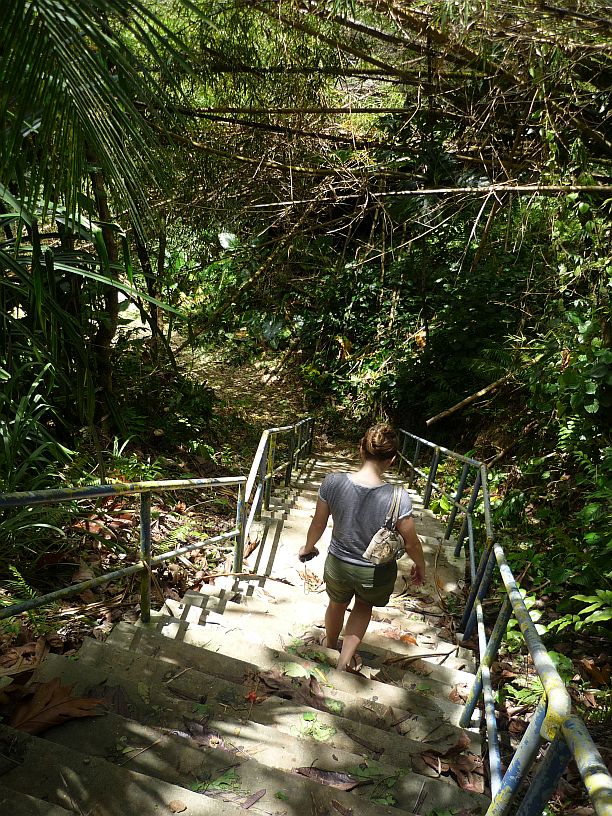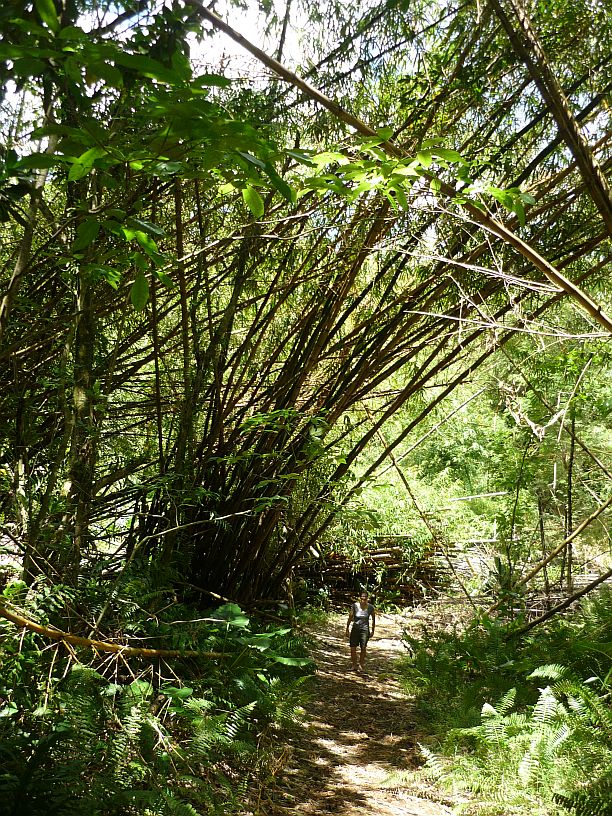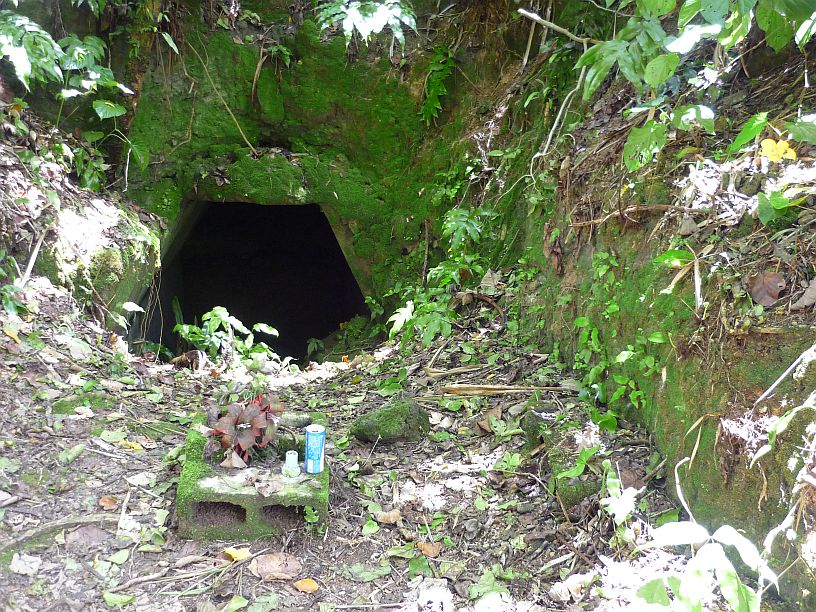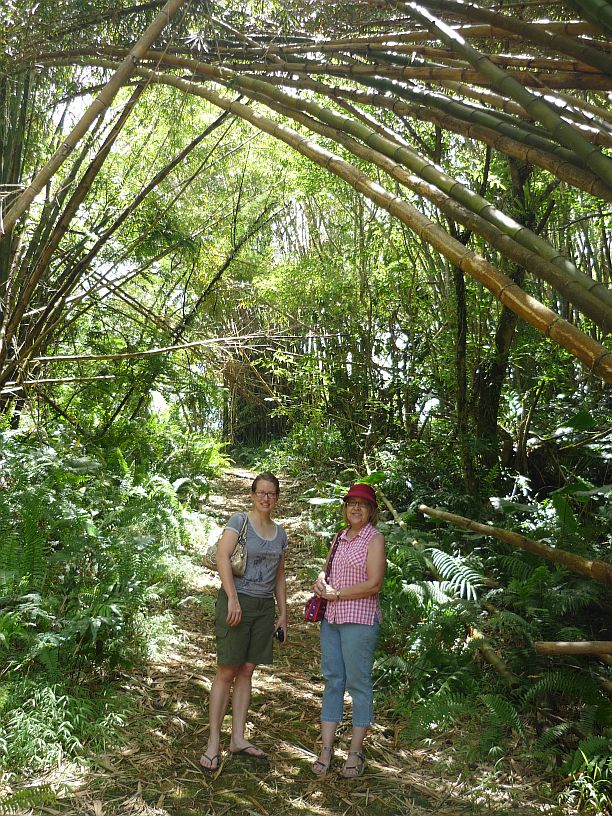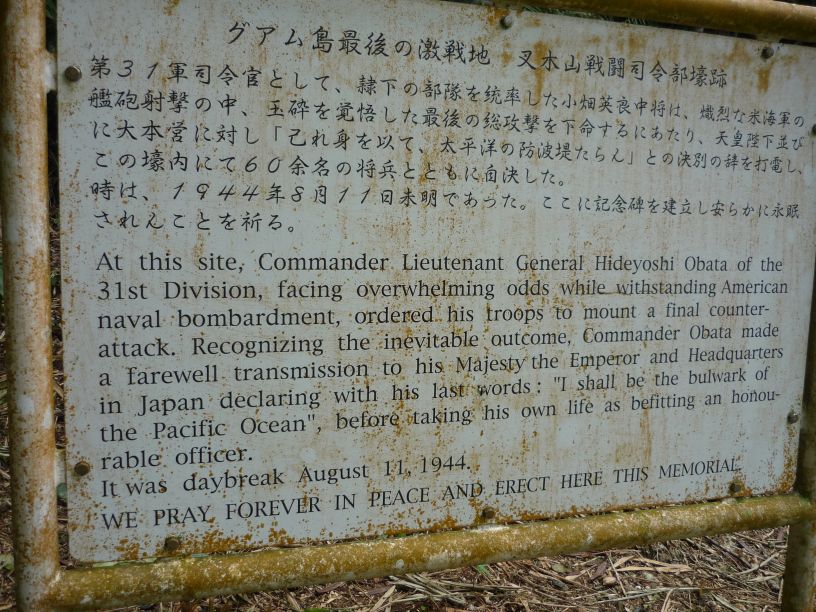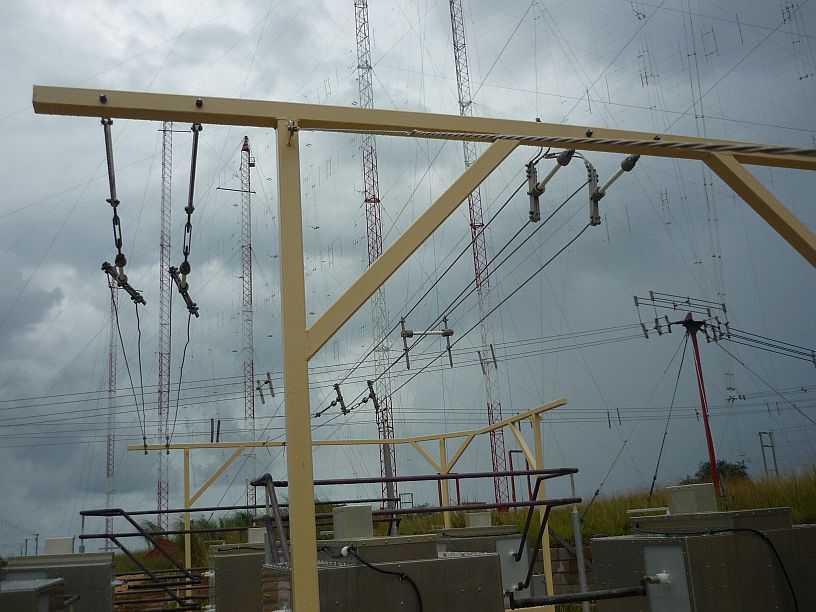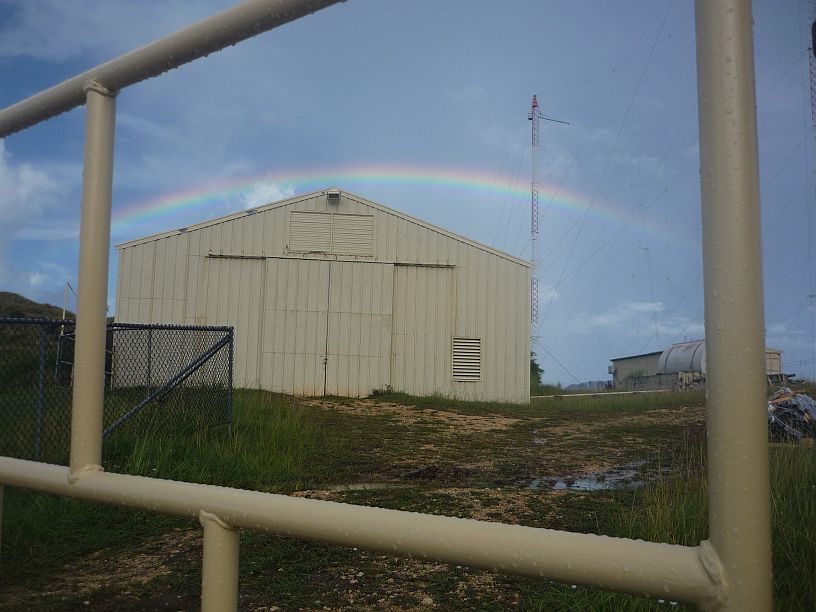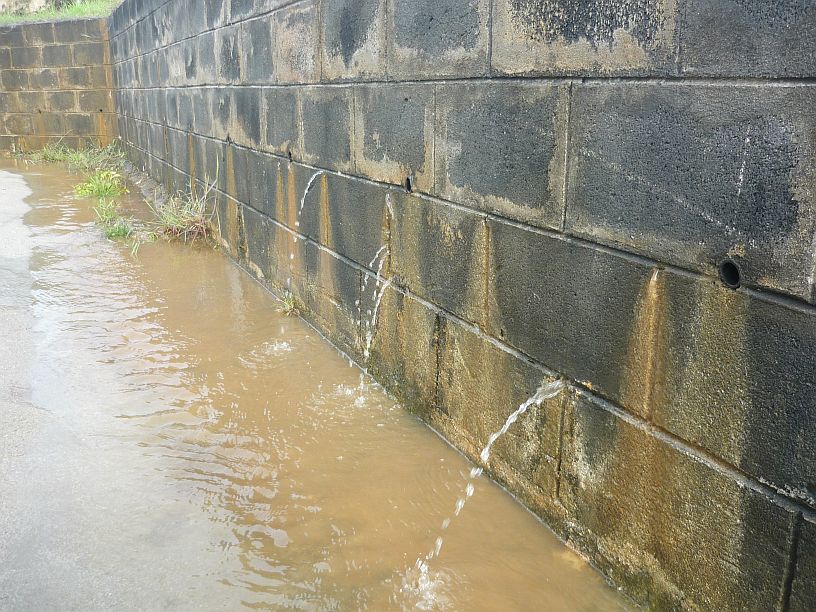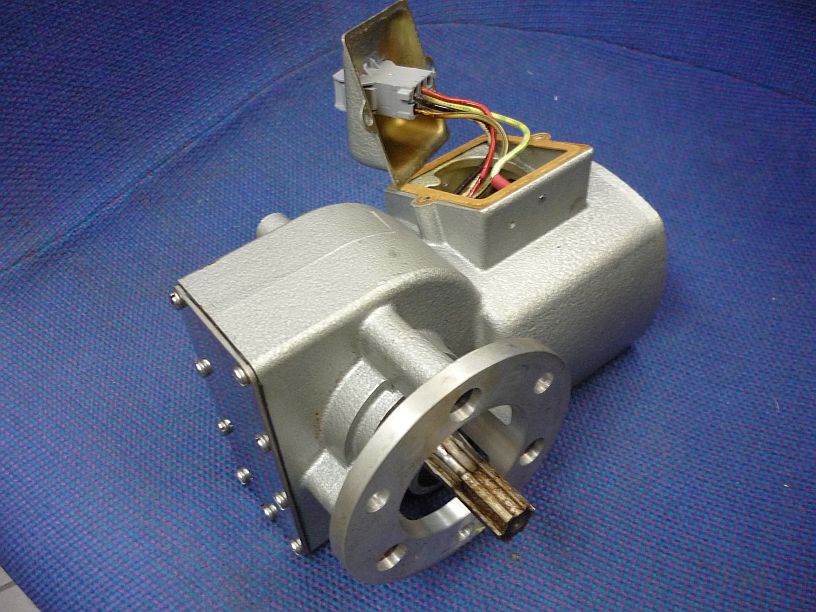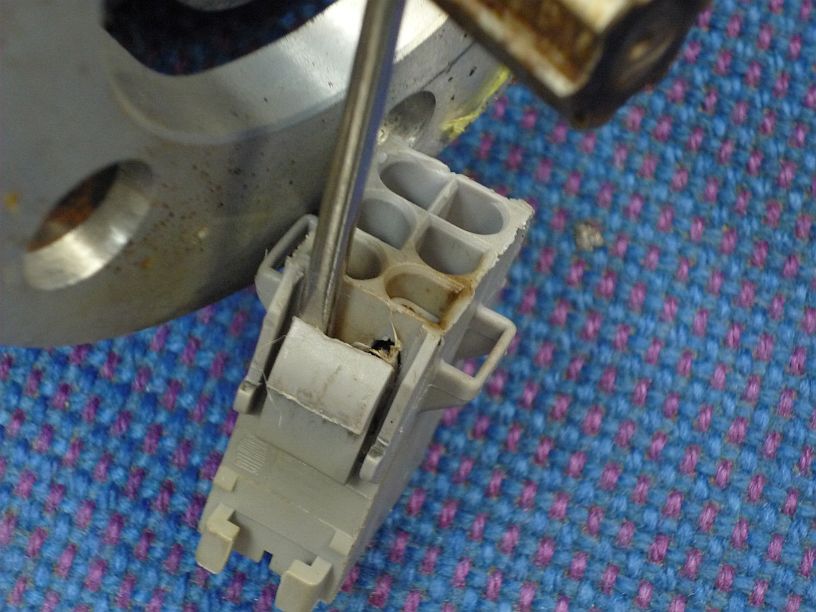I helped Mike inventory the parts for the solar panel array that arrived Monday. Photos of some of the parts are below:
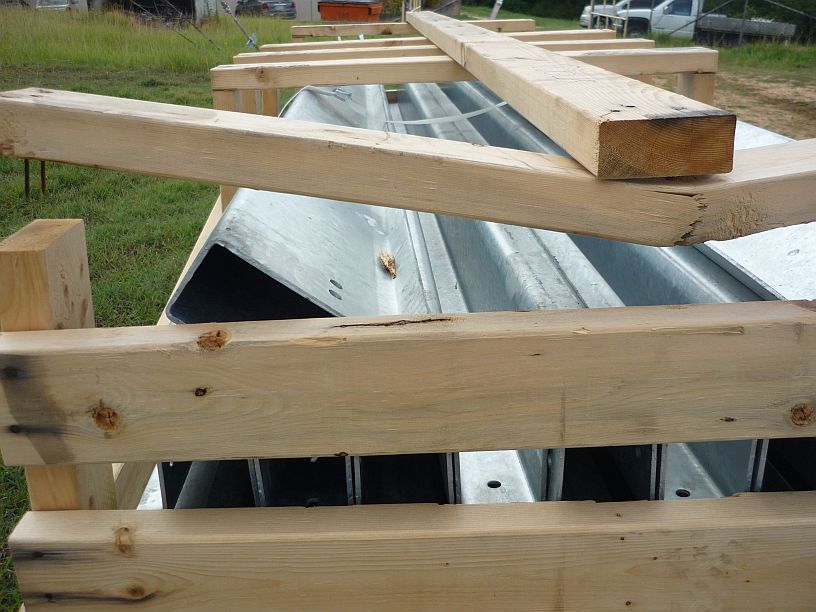
Forty of these steel post will be cemented about 6 feet into the ground to support the structure for attaching the solar panels. There will be 4 rows with 10 posts in each row. Each post will support 6 solar panels.

Each post will have one of these brackets bolted to its top. These will allow some adjustment of the inclination of the array.

These aluminum extrusions will be bolted to the brackets and the angle braces will then be attached to a hole about 2 feet lower on the posts
Because of all the other projects underway here at TWR Guam, a local contractor will be doing the installation of the solar system. Hopefully, he can start on it soon. We would like to see what it looks like before leaving here on 31 July.
Because of the extra cloudy day, the antenna curtains seemed to stand out more clearly than normal. Here are a couple fairly clear photos:
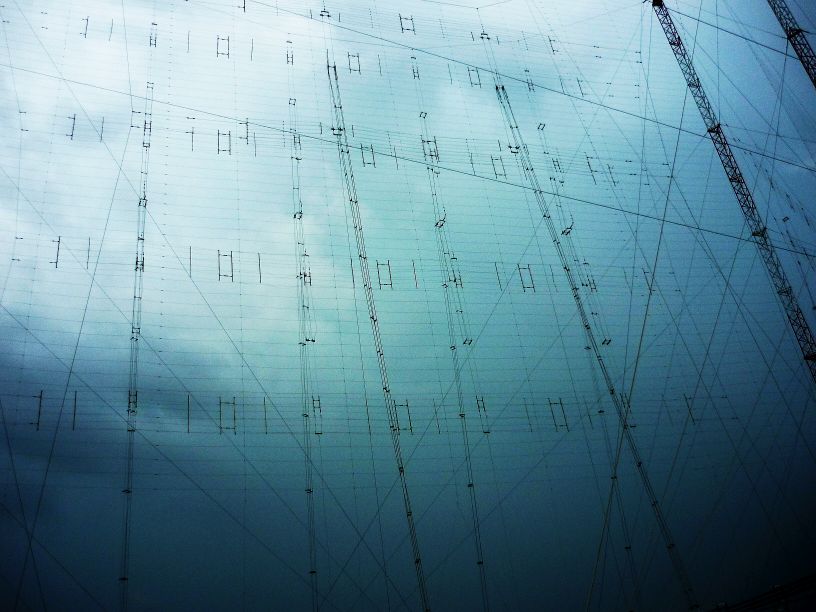
This is actually two antennas with a reflecting screen between. The one on the far side is a 4X4 curtain aimed toward China and South East Asia. The one on the near side is a 2X2 curtain aimed toward Australia/New Zealand and Papua New Guinea.
All day, reports were coming in that tropical storm Rammasun was to hit tonight. Local stations were warning everyone to prepare for this storm and the possibility of being without power and/or water for several days. Many offices were closing early to allow their employees to prepare their homes for the storm.
After we prepared the site for the storm, by securing anything that might get blown around in 60 mph winds, Mike allowed us to go home a couple hours earlier than normal.
The first thing we did when I got home was to fill two of our 5-gallon water jugs. The Water Store had already closed for the coming storm, so we headed to another one we had seen about a 1/4 mile in the other direction from our apartment. Fortunately, it was open.
Virginia filled a large waste basket, a bucket and another water jug with tap water in case we needed water for non-drinking purposes.
Next on the agenda was to close all the typhoon shutters all six windows.
Lastly, we tried to close the shutter on the front down, but found a problem! The screen door is between the shutter and the front door. The shutter could only be closed from the outside! That is not problem, if you are living on the ground floor, because you can close the shutter from the outside and get back in through the back door. That is not an easy to do when our apartment is on the second floor.
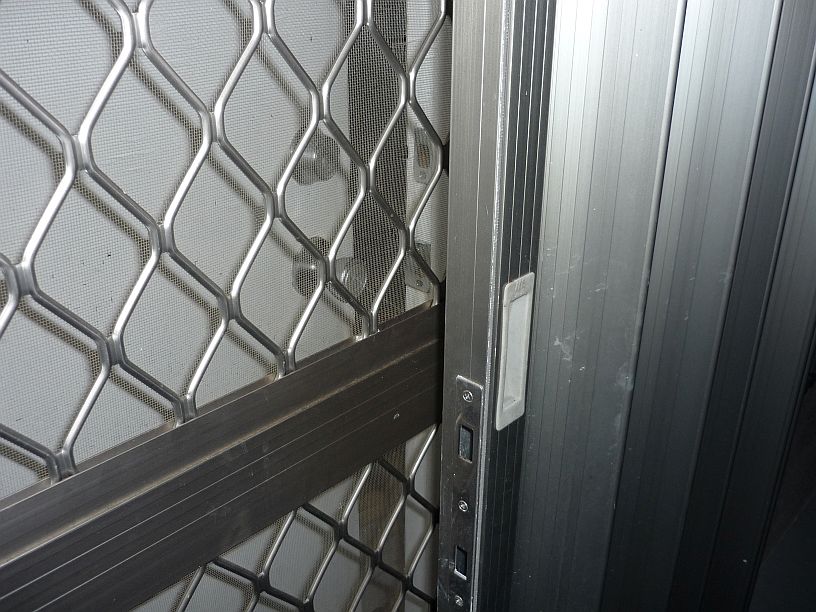
We have a problem! The screen door has to be open to close the shutter from the inside. Not possible!
After investigation, I discovered that the screen door is designed to lift off its hinges. Another problem — the plaster around the door was done in such a way that the screen door could not be lifted high enough to get it off its hinges (maybe the hinge pins will need to be shortened for future storms). To still have this problem, this apartment complex was probably built after the last typhoon that occurred 12 years ago.
Since this is only a tropical storm and not a typhoon and we should not experience storm surge, especially on the second floor, we decided to leave the door shutters open.

